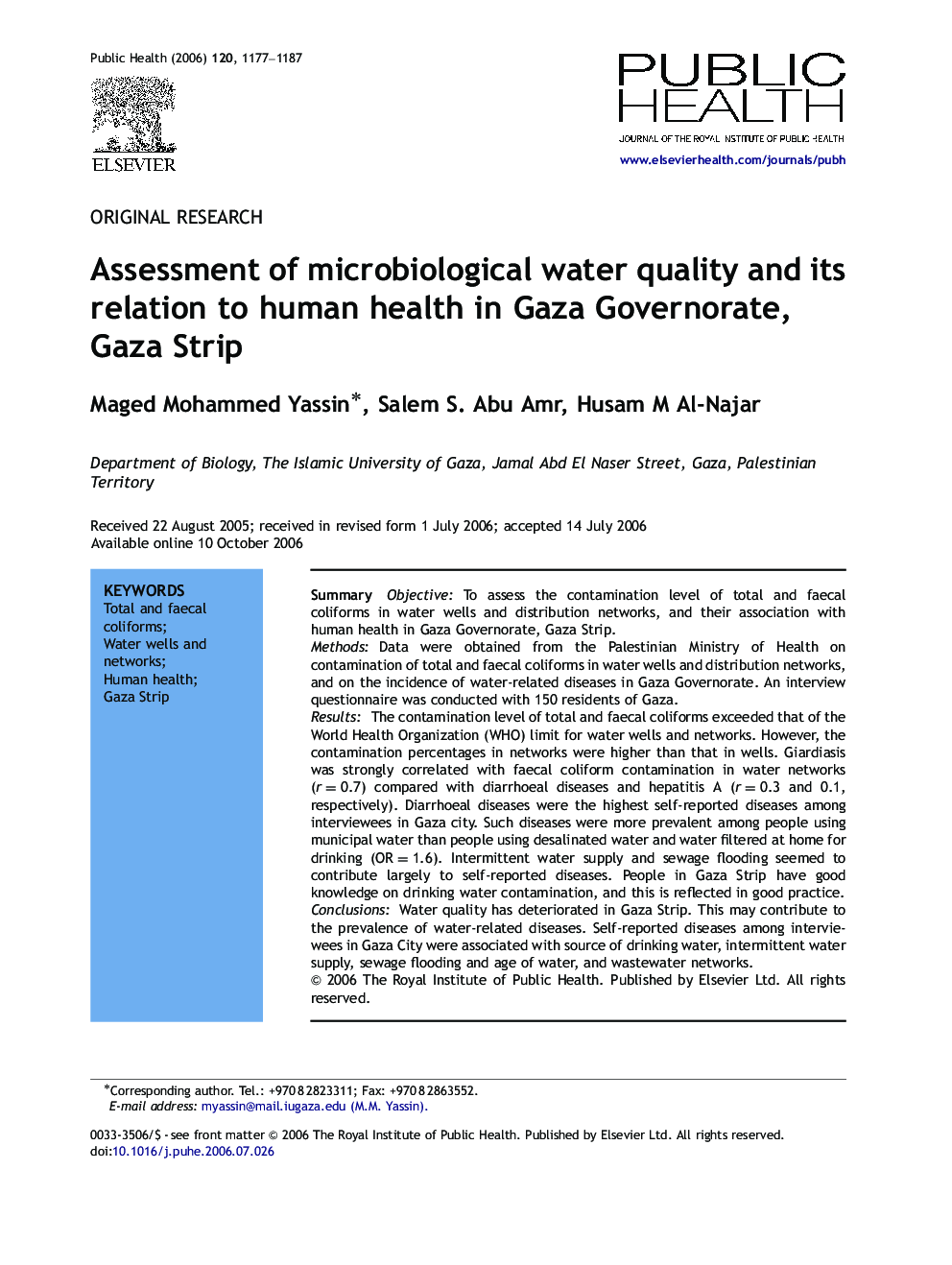| کد مقاله | کد نشریه | سال انتشار | مقاله انگلیسی | نسخه تمام متن |
|---|---|---|---|---|
| 1089229 | 1487214 | 2006 | 11 صفحه PDF | دانلود رایگان |

SummaryObjectiveTo assess the contamination level of total and faecal coliforms in water wells and distribution networks, and their association with human health in Gaza Governorate, Gaza Strip.MethodsData were obtained from the Palestinian Ministry of Health on contamination of total and faecal coliforms in water wells and distribution networks, and on the incidence of water-related diseases in Gaza Governorate. An interview questionnaire was conducted with 150 residents of Gaza.ResultsThe contamination level of total and faecal coliforms exceeded that of the World Health Organization (WHO) limit for water wells and networks. However, the contamination percentages in networks were higher than that in wells. Giardiasis was strongly correlated with faecal coliform contamination in water networks (r=0.7) compared with diarrhoeal diseases and hepatitis A (r=0.3 and 0.1, respectively). Diarrhoeal diseases were the highest self-reported diseases among interviewees in Gaza city. Such diseases were more prevalent among people using municipal water than people using desalinated water and water filtered at home for drinking (OR=1.6). Intermittent water supply and sewage flooding seemed to contribute largely to self-reported diseases. People in Gaza Strip have good knowledge on drinking water contamination, and this is reflected in good practice.ConclusionsWater quality has deteriorated in Gaza Strip. This may contribute to the prevalence of water-related diseases. Self-reported diseases among interviewees in Gaza City were associated with source of drinking water, intermittent water supply, sewage flooding and age of water, and wastewater networks.
Journal: Public Health - Volume 120, Issue 12, December 2006, Pages 1177–1187